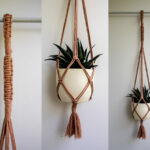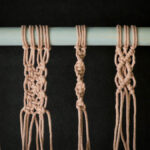The Square Knot is a macrame knot that creates a flat pattern between 4-16 strands. It’s probably the most popular macrame knot.
Quick Guide: Tying a Macrame Square Knot
To tie it, you’ll need 4-16 strands of cord. Align them as illustrated in step 1, with two outer cords separated from all the remaining center cords. In our example, we used four cords.
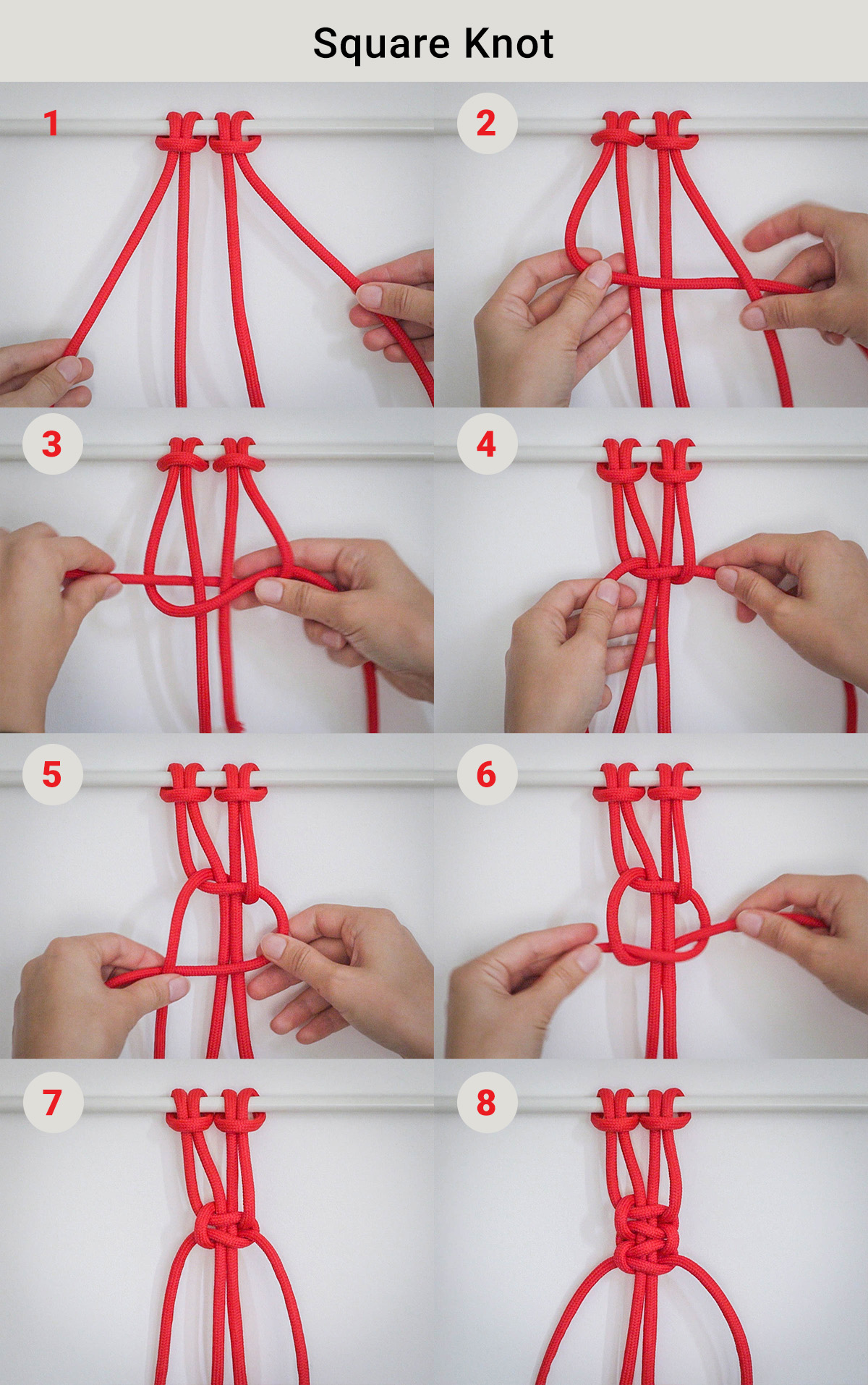
Preferably, use a twisted cord made from natural fibers, but you can use any cord you prefer. In this example, we used a braided synthetic cord.
Take the left cord and pass it in front of the center cords and under the right cord (step 2). Then take the right cord and pass it behind the center cords and in front of the left cord (step 3). Tighten it to finish a Half Square Knot (step 4).
Now tie another Half Square Knot, only this time starting from the right side (steps 5-6). Now you’ve completed a single Square Knot (step 7). You can continue by tying many Square Knots in a row to create an interesting flat pattern (step 8).
Common Uses for the Square Knot
The Square Knot is very commonly used in macrame to create handles, bracelets, and rings. By tying it with 8-16 cords, instead of a flat pattern, you get a round one. If you fold it in half and tie a Gathering Knot after it, you can create a ring, which is useful for hanging your project. This can be used, for example, when creating Macrame Plant Pot Hangers.
If you tie it with 4-6 cords, then a flat pattern is created. This is often used in combination with other knots to create wall hangings and other interesting macrame projects.
Other Macrame Knots Based on the Square Knot
Half Square Knot: The first (or second) half of a regular Square Knot. This version is often used in other knots to create interesting patterns.
Spiral Stitch: If you continue tying many Half Square Knots facing in the same direction, the flat pattern will start to eventually turn into a spiral. This creates an interesting design that looks like a DNA spiral.
Left-Facing Square Knot: Shown in our example. You create it by starting with the left string in step 2.
Right-Facing Square Knot: Identical to our example, only steps 5-7 are replaced with 2-4. Essentially, you start with the right cord instead of the left one. The central sideways “V” is now facing in the other direction.
Alternating Square Knot: Needs to be tied with 12 or more strands. First, they’re grouped into 3 groups, with 4 cords in each group. Then a Square Knot is tied in each group. In the second row, only two groups are created, combining 2 strands from the first group with 2 from the second one. Then again, a Square Knot is tied. This creates an alternating, diagonal pattern.
Berry Knot: Creates a round-shaped ball pattern. It’s tied with four Square Knots tied in a row. Then the two central strands are looped through the top, rolling it all up into a ball.
Step-By-Step Gide: How to Tie the Macrame Square Knot
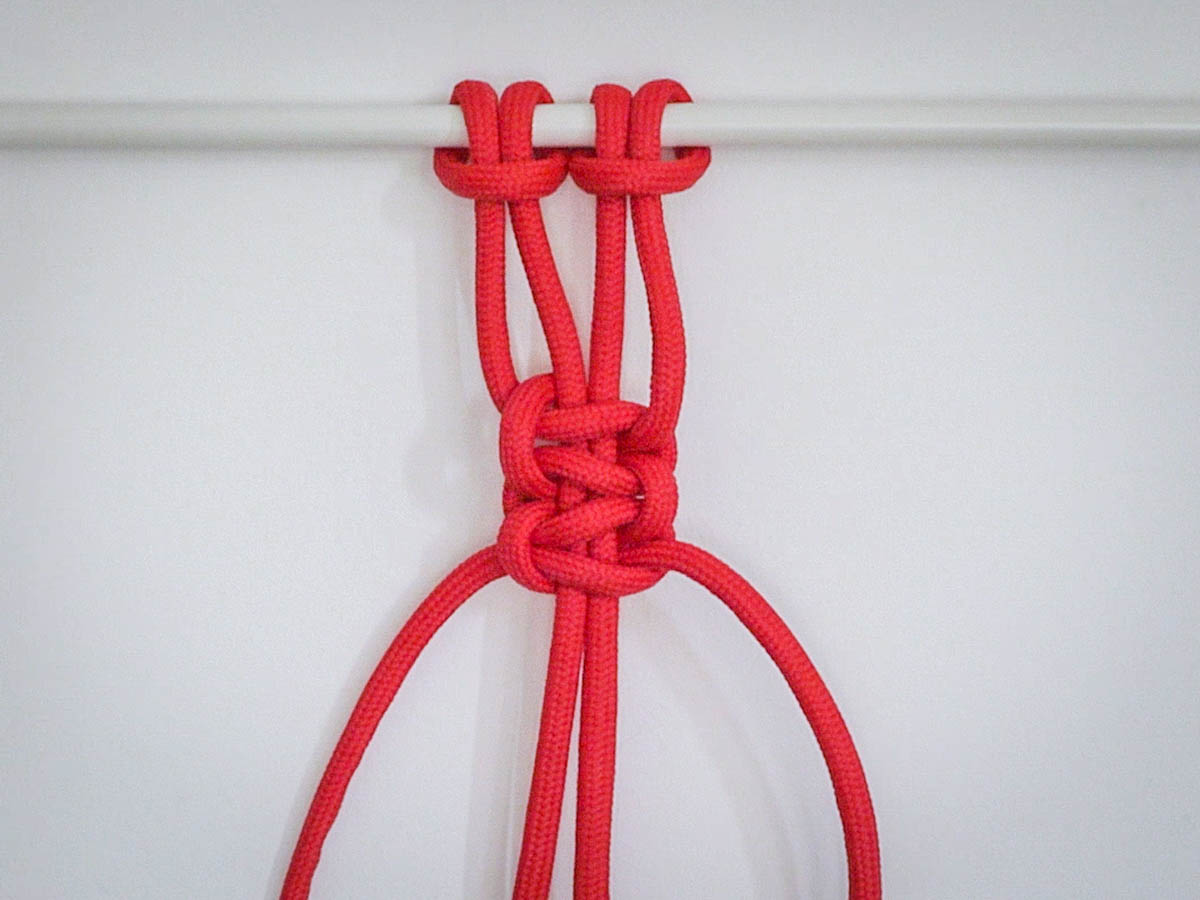
A step-by-step guide on how to tie the Macrame Square Knot.
Step 1:
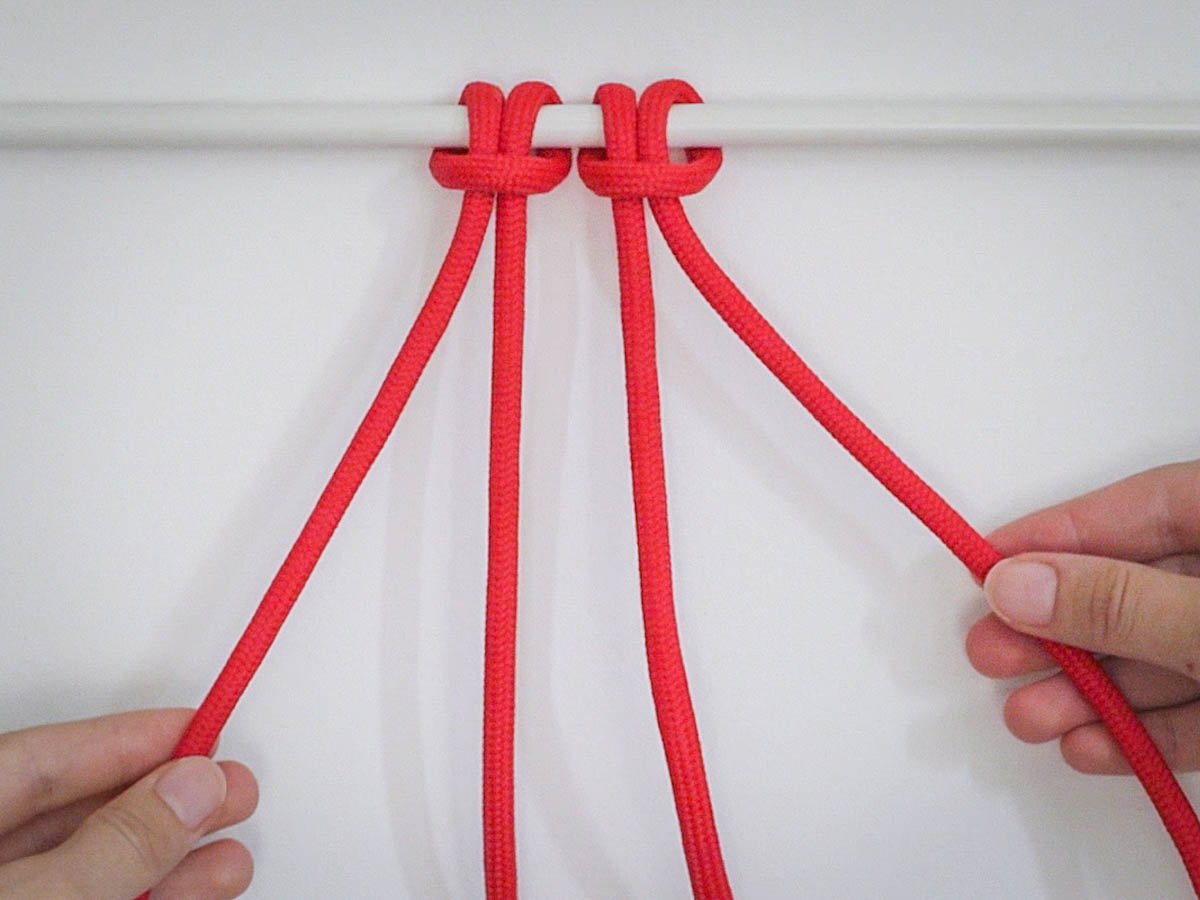
To tie the Square Knot, you’ll need 4-16 strands of cord. Separate the outermost thread on each side and bundle up all the remaining cords in the center.
Step 2:
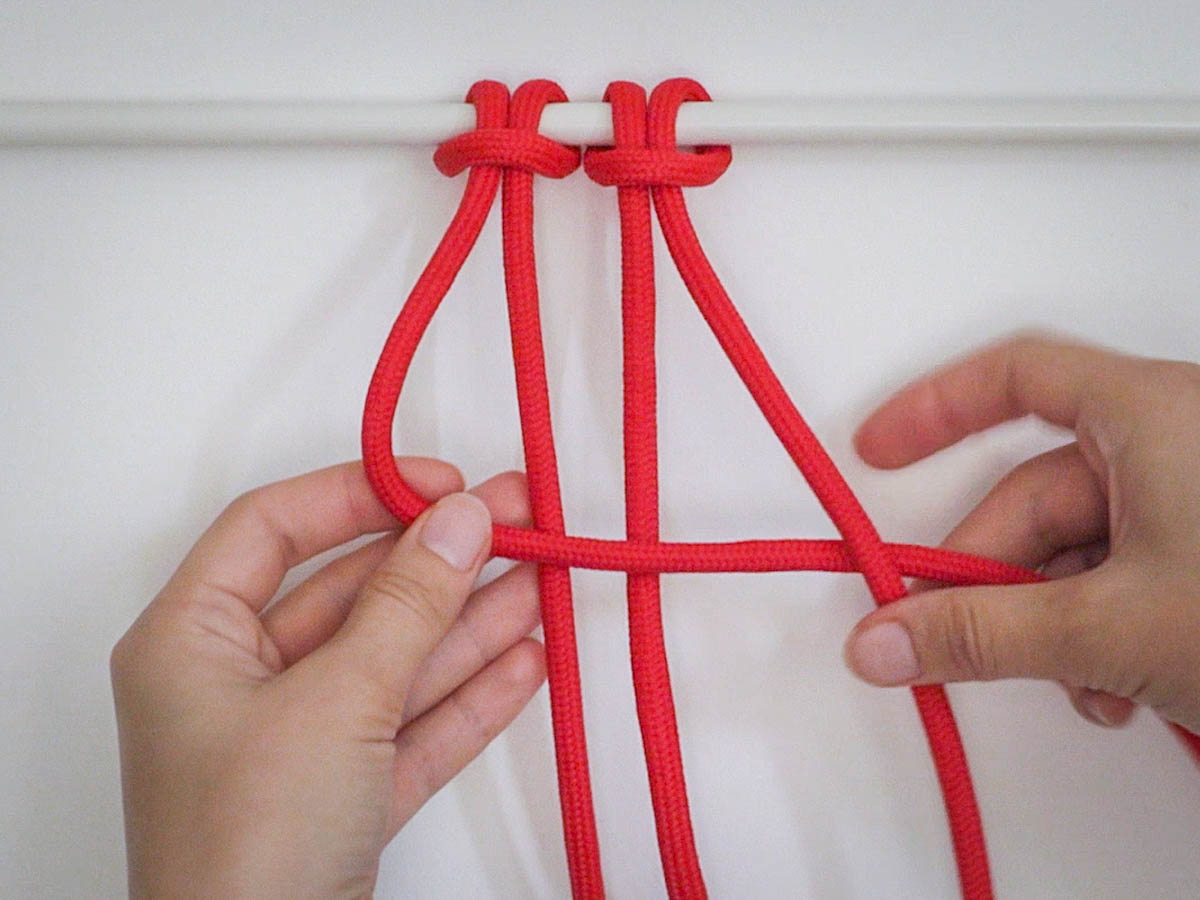
Pass the left cord in front of the center ones and behind the right cord.
Step 3:
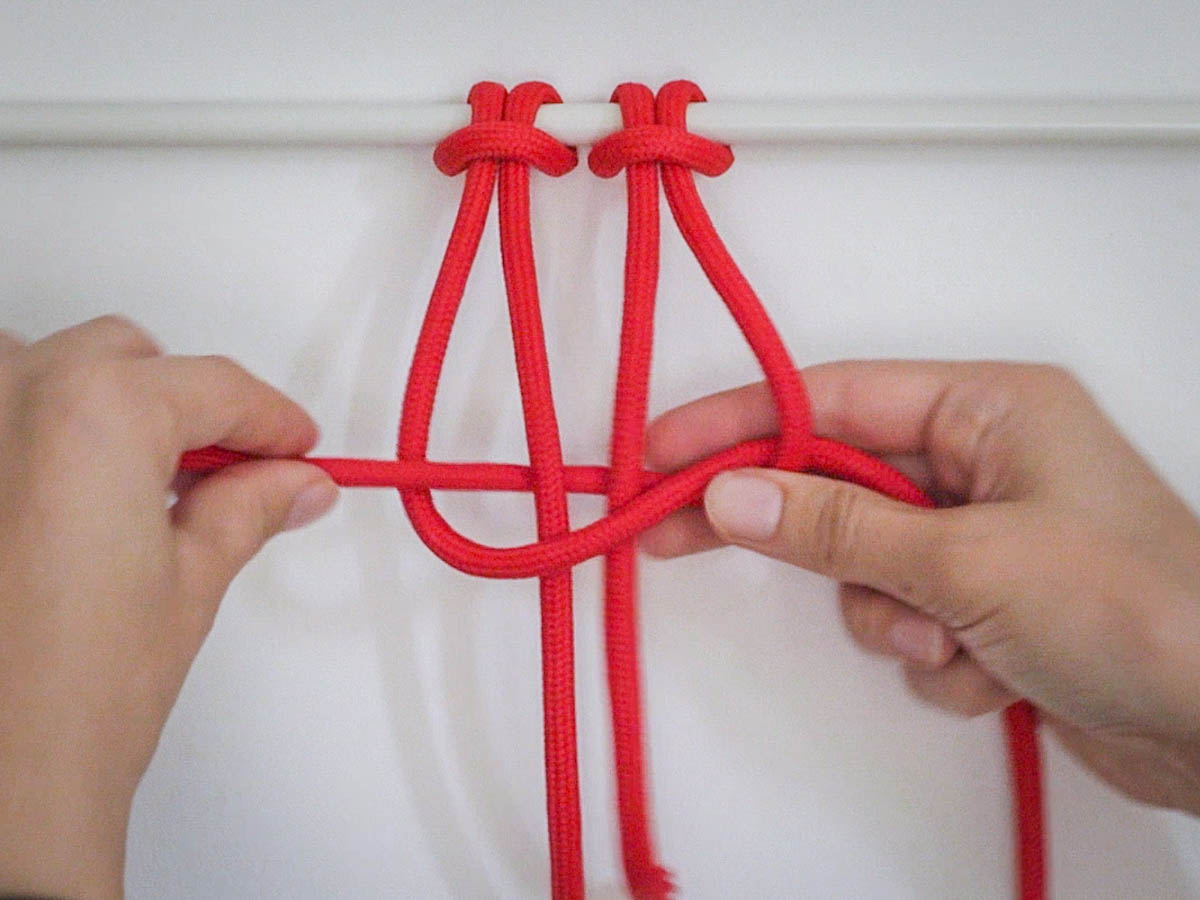
Pass the right cord behind the center ones and in front of the left one.
Step 4:
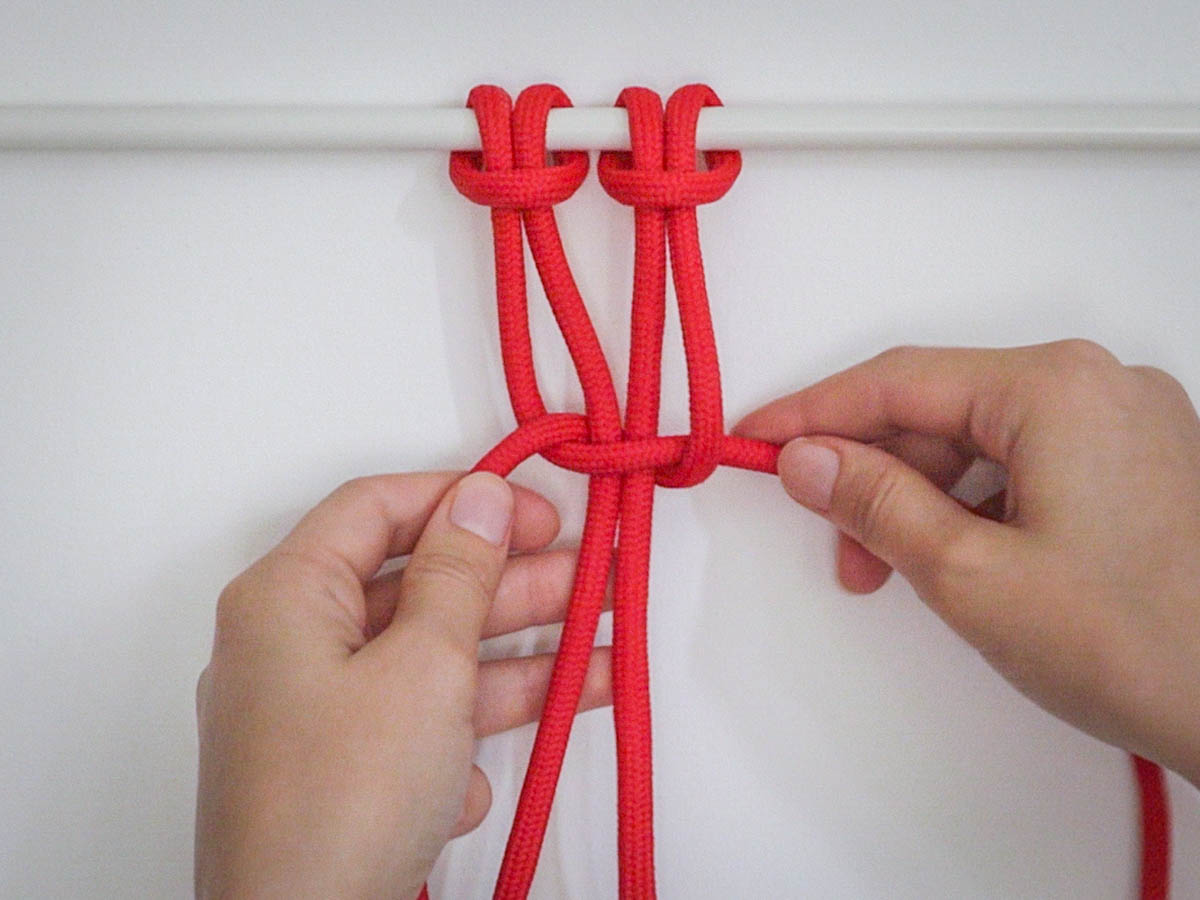
Tighten the knot to finish a Half Square Knot.
Step 5:
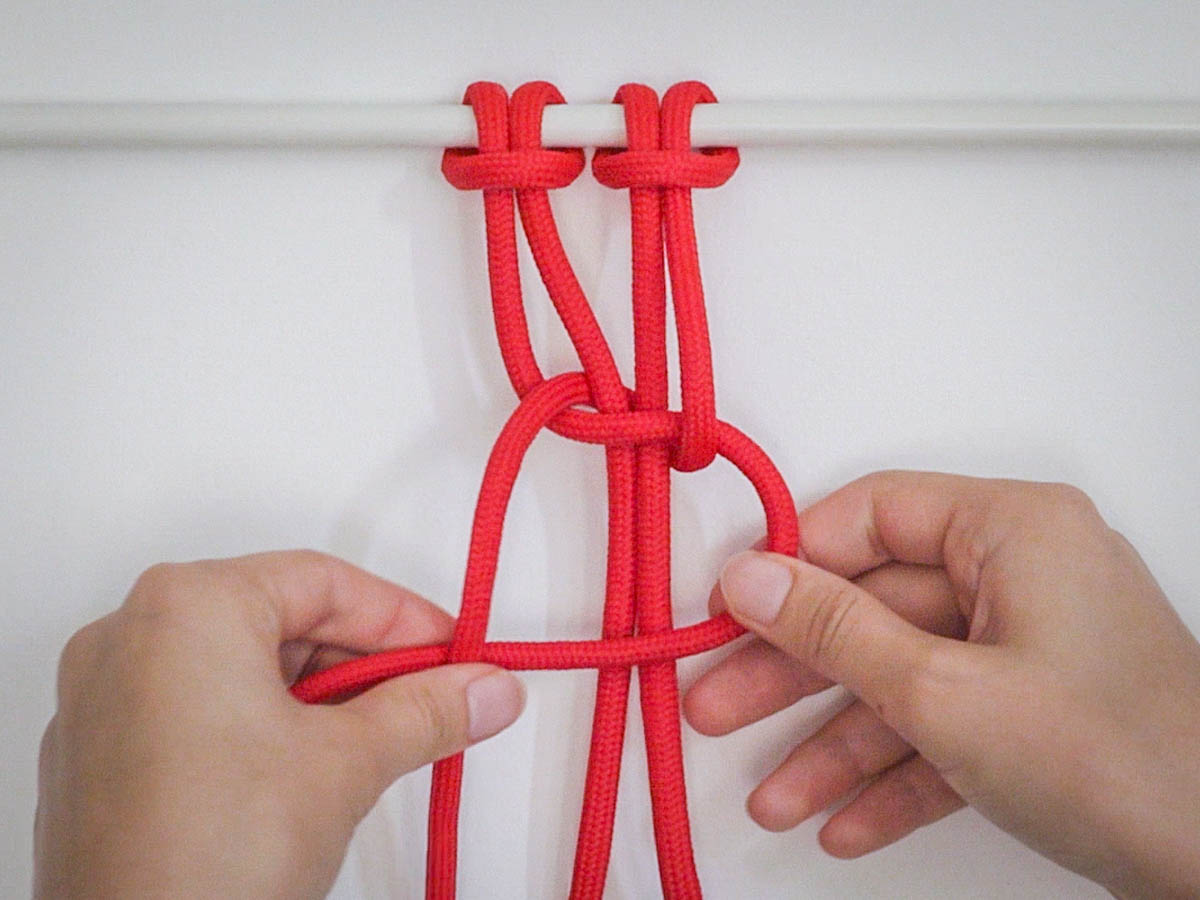
Pass the right cord in front of the center ones and behind the left one.
Step 6:
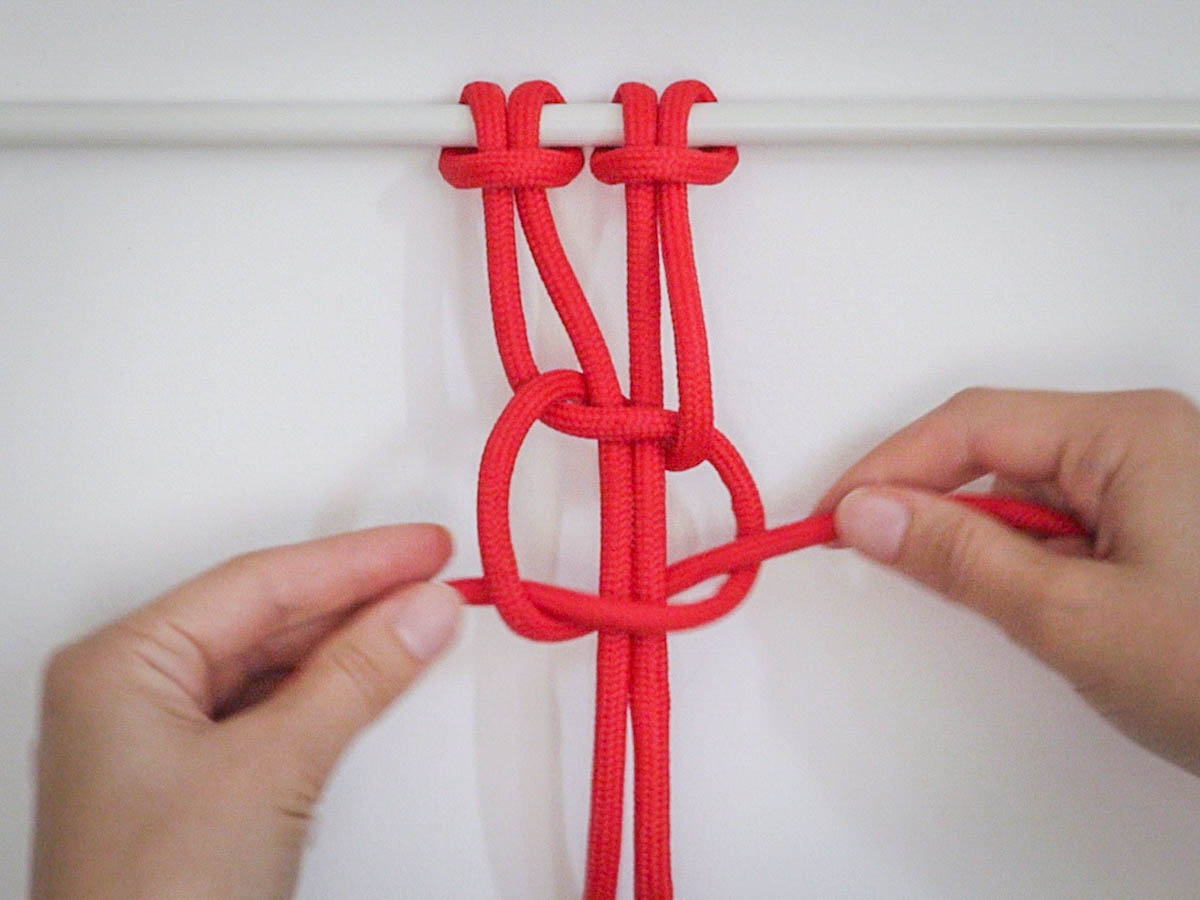
Pass the left cord behind the center ones and in front of the right one.
Step 7:
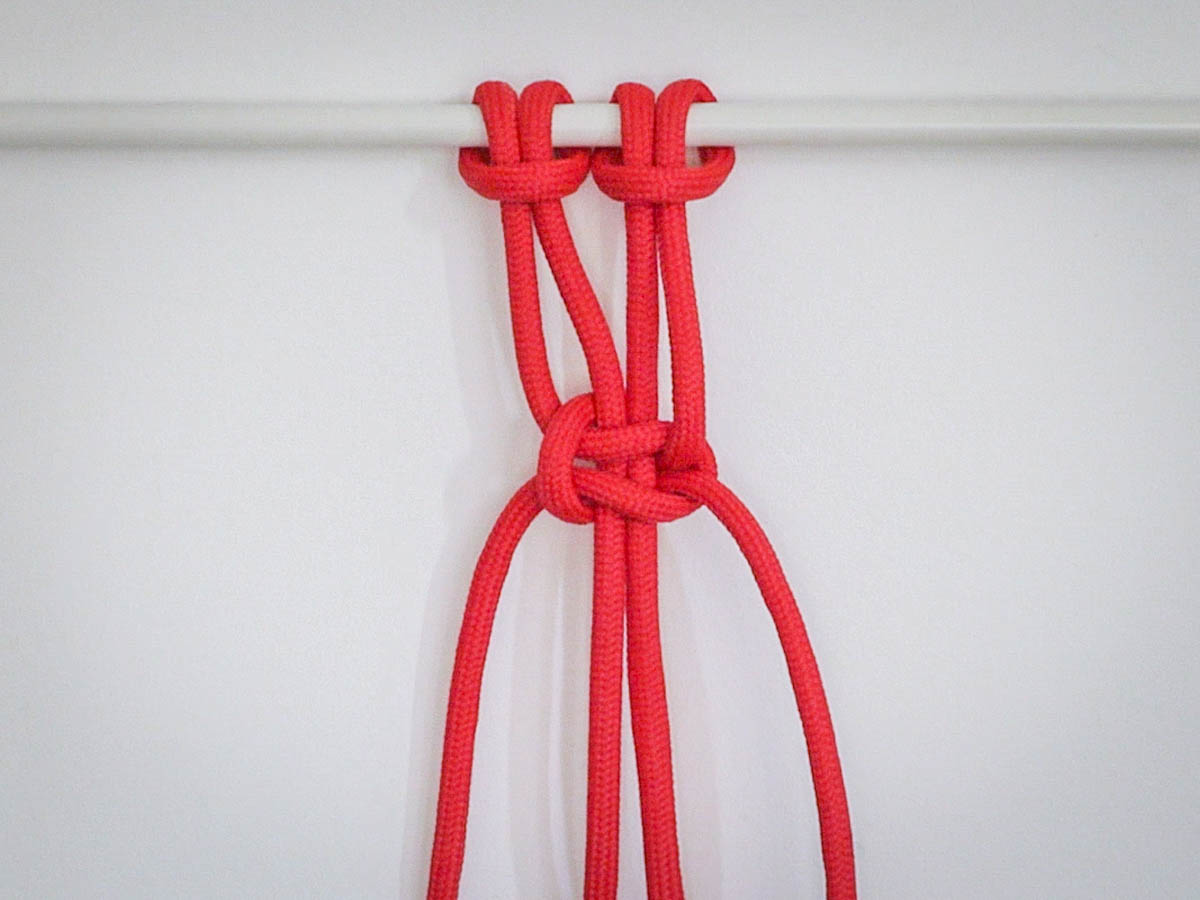
Tighten to finish a Full Square Knot.
Step 8:
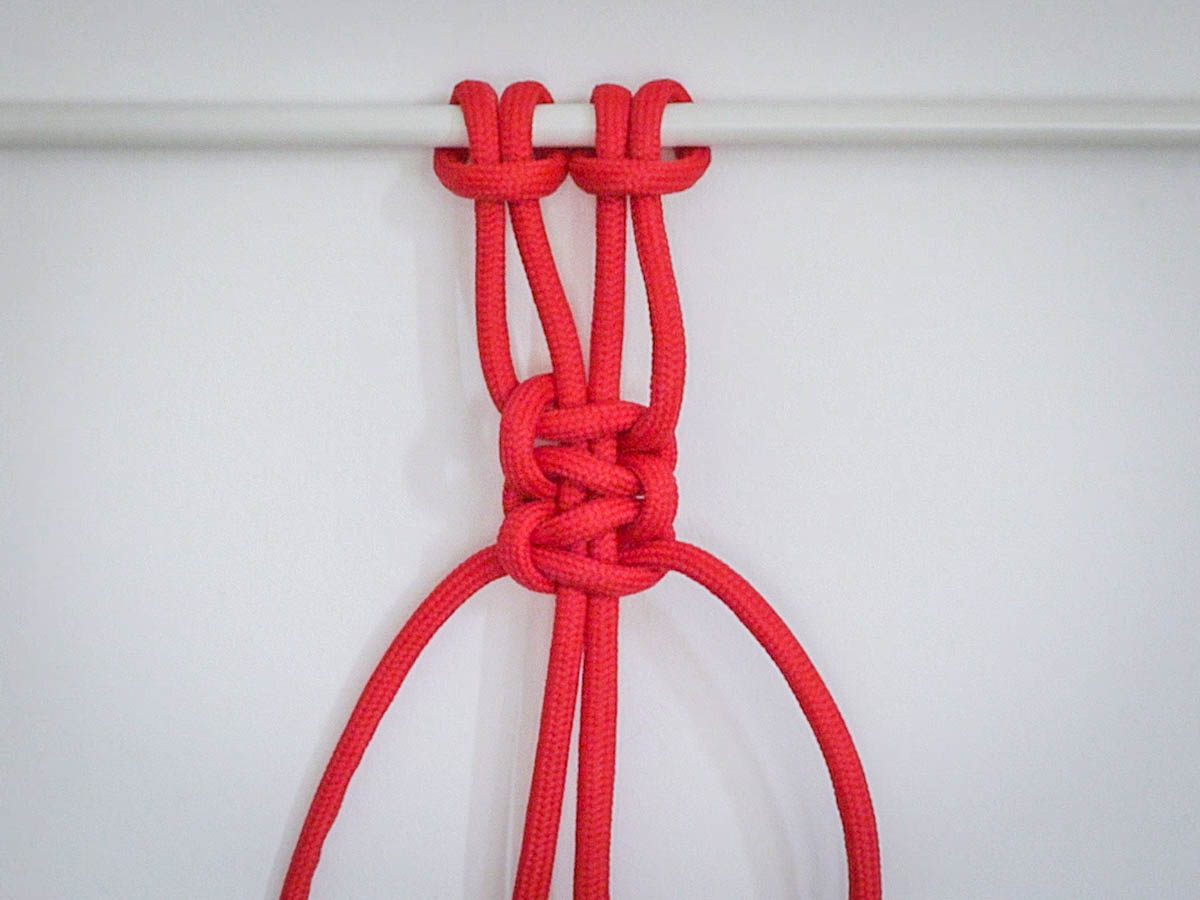
Continue by tying many Square Knots in a row.

